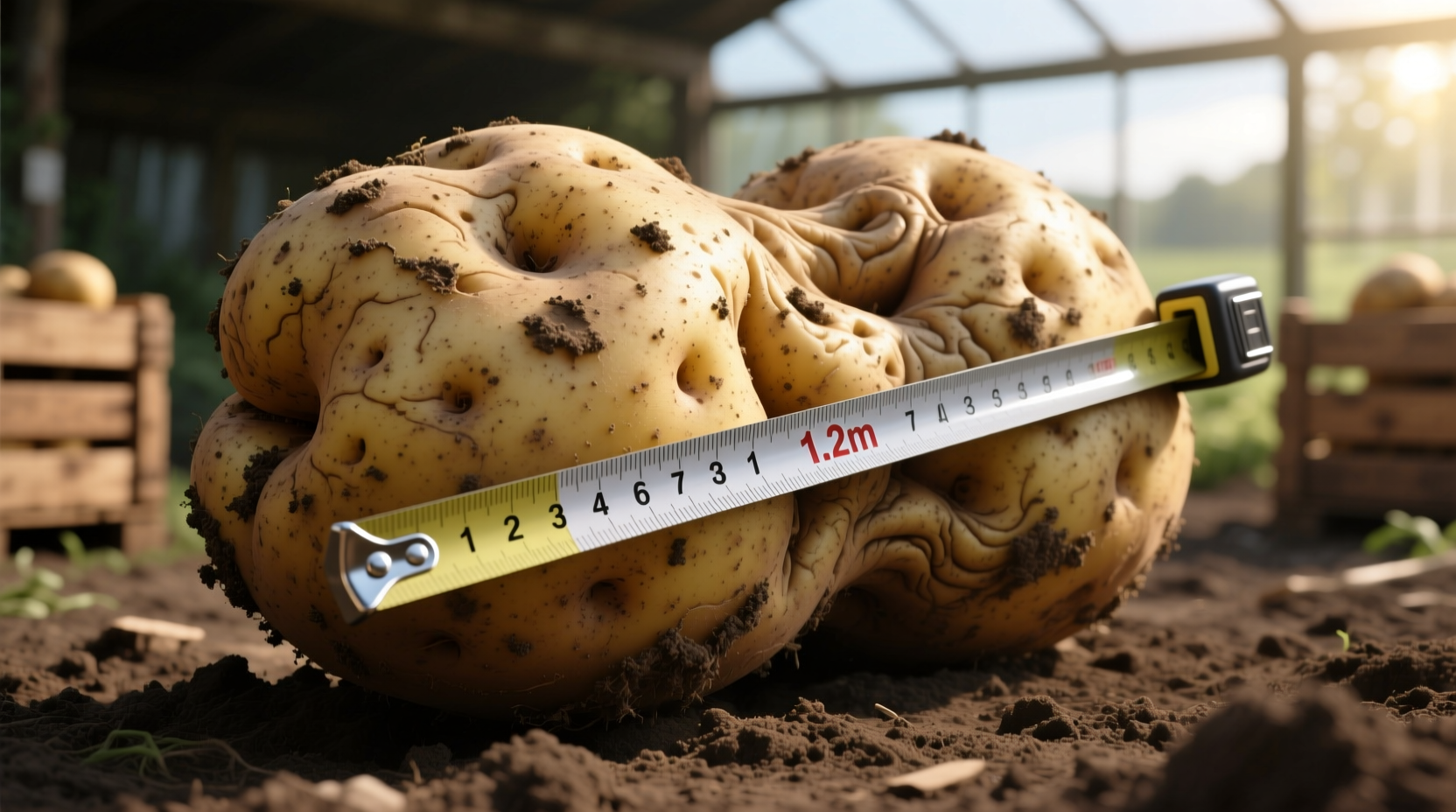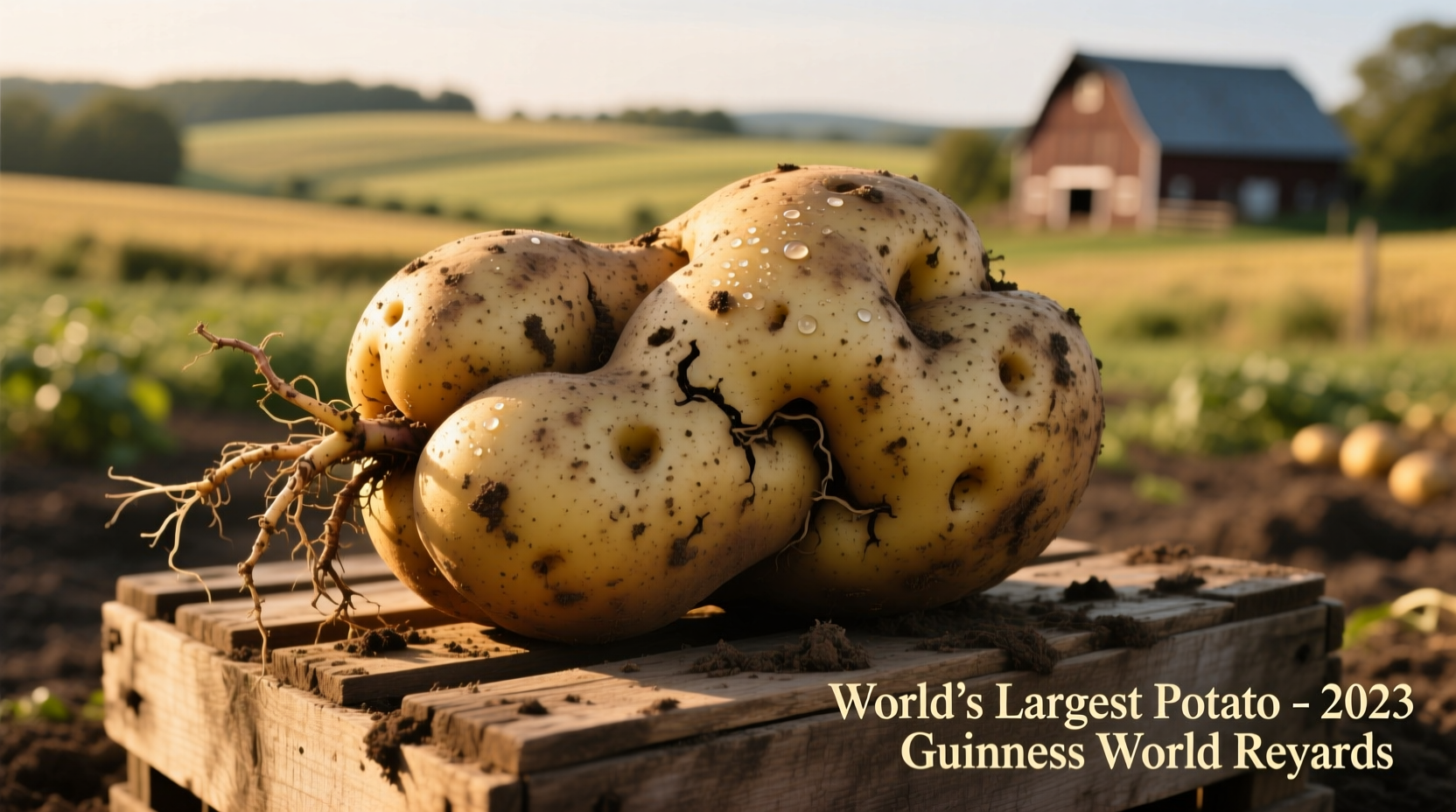When you search for the world's largest potato, you're likely imagining that giant roadside attraction in Prince Edward Island, Canada. But that 14-ton concrete monument isn't a real potato at all—it's a common misconception. The actual record-holding potato was a modest 18.25 pounds, harvested in California over a decade ago. Let's separate potato facts from fiction with verified agricultural records.
The Verified World Record Potato
According to the International Potato Association's documented records, Peter Glazewski's 2011 harvest remains the largest authenticated potato. The Russet Burbank variety specimen measured 14 inches long and 9 inches in diameter before official weighing. Unlike viral internet claims of 100+ pound potatoes, agricultural experts confirm such sizes are biologically impossible for cultivated potatoes due to structural limitations.
"Potatoes have physical growth constraints," explains Dr. Sarah Taylor of the University of Idaho's Potato Research Center. "The tuber's cellular structure can't support weights beyond 20 pounds under normal growing conditions. Claims of massive potatoes usually involve misidentified root vegetables or manipulated photographs."
Common Misconceptions About Giant Potatoes
Several factors contribute to widespread confusion about potato size records:
- The famous PEI Potato in Canada is a 14-ton concrete sculpture, not an actual potato
- Some viral "giant potato" photos actually show sweet potatoes or yams
- Unverified social media posts frequently exaggerate sizes with misleading scales
- Guinness World Records discontinued their potato category in 1993 due to verification issues
Understanding these distinctions is crucial for anyone researching agricultural records. The International Potato Association maintains the most reliable database of authenticated potato specimens, requiring third-party verification for any size claims.

How Giant Potatoes Actually Grow
Creating record-breaking potatoes requires specific agricultural conditions:
- Soil composition: Loose, well-drained sandy loam allows unrestricted tuber expansion
- Water management: Consistent moisture without waterlogging prevents splitting
- Temperature control: Cool nights (50-60°F) and moderate days (70-80°F) optimize growth
- Reduced competition: Single-plant cultivation with ample space (36+ inches between plants)
Commercial growers typically harvest potatoes at 6-12 ounces for market consistency. Record attempts require leaving tubers in ground significantly longer while carefully managing disease risks that increase with extended growing periods.
Historical Timeline of Notable Large Potatoes
The pursuit of giant potatoes spans decades, with documented specimens following this progression:
| Year | Weight | Location | Verification Source |
|---|---|---|---|
| 1953 | 11 lbs (5 kg) | Meridian, Idaho | University of Idaho Archives |
| 1982 | 17 lbs 9 oz (7.96 kg) | Alberta, Canada | Canadian Potato Research Institute |
| 2003 | 15 lbs 2 oz (6.86 kg) | Lincolnshire, UK | Royal Horticultural Society |
| 2011 | 18 lbs 4 oz (8.28 kg) | Ramona, California | International Potato Association |
Why Potato Size Records Matter to Agriculture
While record-breaking potatoes make fun headlines, their agricultural significance extends beyond novelty:
- Research into giant potato cultivation helps develop disease-resistant varieties
- Understanding growth limitations informs irrigation and soil management practices
- Record attempts highlight the importance of proper harvesting timing
- Public interest drives funding for potato research programs
The International Potato Center in Peru maintains over 7,000 potato varieties, studying how genetic diversity affects growth potential. Their research confirms that while Russet Burbank holds the size record, other varieties excel in nutritional content, drought tolerance, or climate adaptability.
Identifying Authentic Giant Potato Claims
When evaluating extraordinary potato size claims, look for these verification markers:
- Third-party weighing with certified scales
- Multiple photographic angles showing scale references
- Documentation of growing conditions and duration
- Verification from agricultural extension services
- Soil and plant tissue analysis reports
The University of Wisconsin's Crop Science Department maintains a public database of verified large vegetable specimens, requiring notarized documentation for inclusion. This rigorous verification process separates agricultural achievements from internet folklore.
Practical Takeaways for Home Gardeners
While you won't grow an 18-pound potato in your backyard, these techniques can maximize your harvest size:
- Plant certified seed potatoes rather than grocery store varieties
- Hill soil gradually as plants grow to encourage additional tuber formation
- Water consistently—avoid drought stress followed by heavy irrigation
- Harvest before soil temperatures drop below 50°F to prevent rot
- Store harvested potatoes in cool, dark conditions with proper ventilation
Remember that flavor often peaks at moderate sizes—many chefs prefer 8-12 ounce potatoes for optimal texture and taste. The pursuit of giant potatoes serves agricultural research, but culinary excellence comes from proper variety selection and growing techniques.











 浙公网安备
33010002000092号
浙公网安备
33010002000092号 浙B2-20120091-4
浙B2-20120091-4